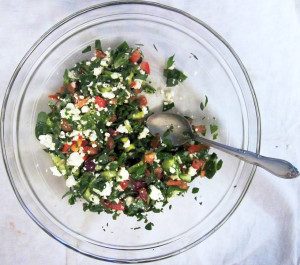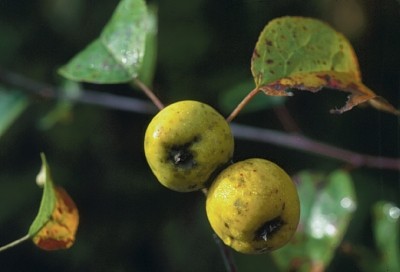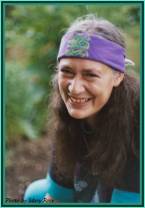Apple season is upon us, depending where you live. When I was a kid back in the Dark Ages I always associated going back to school — first Tuesday after Labor Day — and raiding apple trees. I also raided the concord grapes in the nearby hedge rows as well. The actual word for that is “scrumping.” There were orchard apples trees and there were wild apple trees. Sometimes the wild apples were part culitvated apples that grew up literally from a tossed apple core. Other times they were real wild apples, small and tart if not bitter. Those were usually better off cooked by a camp fire by the river while fishing after school. I walked or biked four miles to school and often didn’t get home until after dark. Where I grew up there were many an abandoned homestead with flourishing apple trees in the unused yards. There is something philosophical in knowning the apple tree outlived family and home. Back then there was a greater variety of species than even just a few decades later. And contrary to common belief, apples will grow in Florida. I recommend the Apple Anna. To read more about apples go here.
 The aroma of a wild food is the most flexible of all descriptions. This is for two reasons: Noses differ and plants differ. Taste is also quite flexible but aroma beats it out. When you read in a foraging guide, or even in my articles, that a plant smells like such-and-such know that the description is quite subjective. There are several local species that elicit different descriptions even when noses are whiffing the same sample. One low-growing fruit — the Gopher Apple — has been described as smelling like pink bubble gum, a new plastic shower curtain, or no aroma at all. The smelly spice Epazote ranges in opinions from citrusy to floor varnish to industrial cleaner. Even among non-edibles the olfactory estimations can vary such as with the toxic Laurel Cherry. Some think its cyanide smells like almonds, other think they smell maraschino cherries, some can’t smell the cyanide at all. In guide books a reported aroma is just that, a guide. It is not always for certain by any means. There’s room for aromatic latitude.
The aroma of a wild food is the most flexible of all descriptions. This is for two reasons: Noses differ and plants differ. Taste is also quite flexible but aroma beats it out. When you read in a foraging guide, or even in my articles, that a plant smells like such-and-such know that the description is quite subjective. There are several local species that elicit different descriptions even when noses are whiffing the same sample. One low-growing fruit — the Gopher Apple — has been described as smelling like pink bubble gum, a new plastic shower curtain, or no aroma at all. The smelly spice Epazote ranges in opinions from citrusy to floor varnish to industrial cleaner. Even among non-edibles the olfactory estimations can vary such as with the toxic Laurel Cherry. Some think its cyanide smells like almonds, other think they smell maraschino cherries, some can’t smell the cyanide at all. In guide books a reported aroma is just that, a guide. It is not always for certain by any means. There’s room for aromatic latitude.
Plant Pronunciations: What’s really important is knowing the plant, and whether you can eat it or not. What you call it is secondary to that. Common names are okay as long as you know many plants can have the same common name. “Indian Potato” comes to mind. There are two problems with common names. You and someone else could be talking about the “Indian Potato” but actually be talking about two different species. Also every plant — in theory — has one botanical name but can have virtually dozens of common names. Many times it is just easier to remember the one botanical name.
Dead Latin was chosen for the naming plants because … well… it’s dead, non-changing, non-evolving. Perhaps it was also chosen by academics as a way to keep Latin from disappearing completely. But know even when Latin was spoken it had regional accents, and far flung Latin became French, Spanish and Romanian. At home it became Italian. There is no etched-in-granite correct way to pronounce botanical names. And of course there are different pronunciations botanical names in American English vs British English such as with the pine genus (PINE-us, vs. PEEN-iss.)
Being Greek I choose to pronounce some “Latin” botanical names the Greek way because Dead Latin is half bastardized Greek and half bastardized Etruscan. Take the genus Dioscorea, the true yams. Dead Latin has it dye-oh-SCORE-ree-ah. It is named after a Greek physician Dioscorides, ???????? ???????????? 40-90 AD. So I prefer thee-oh-score-REE-ah, closer to the Greek way of saying it. The only time the botanical name is truly important is, like above, is to make sure the two of you are talking about the same plant. This happened recently when I got an email from Singapore about how to use the Skunk Vine. There are several Skunk Vines. As we were exchanging information about Paederia foetida without the botanical name that would have been difficult.
 One of the most common “weeds” purslane is also among the most nutritious. It’s not native to North America which might explain why Americans are about the only population on earth that don’t eat it regularly. It Greece it is one of several wild green collectively called “horta” though purslane itself is called Glistrida, ?????????., gliss-STREE-dah. It’s served in a wide variety of ways from a little olive oil and salt to more elaborate dressings. Here’s how the Cretans like to serve it, croutons optional:
One of the most common “weeds” purslane is also among the most nutritious. It’s not native to North America which might explain why Americans are about the only population on earth that don’t eat it regularly. It Greece it is one of several wild green collectively called “horta” though purslane itself is called Glistrida, ?????????., gliss-STREE-dah. It’s served in a wide variety of ways from a little olive oil and salt to more elaborate dressings. Here’s how the Cretans like to serve it, croutons optional:
1 large red ripe tomato, cored and sliced into wedges or diced
1/2 medium or 1 small cucumber, peeled, and sliced, seeding optional
1/2 a small onion, very thinly sliced
Feta cheese (as much as you like to eat in a salad)
5 or 6 stalks of purslane, rinsed then cpped (use all but the thickest stems. They are better picked.)
A couple of sprigs of basil
Kalamata olives
Salt to taste
Mild vinegar
Good olive oil
A sprinkle of oregano
Combine tomato, cucumber, onion, feta, purslane, basil leaves, olives, toss to combine. Sprinkle with a pinch of salt or to taste. Add a few drops of vinegar, top with olive oil. sprinkle with dried oregano. To read more about purslane click here.
Foraging classes this week will be held in Melbourne and Winter Park. The classes have students signed and well be held. For more information click here.
A reminder the Florida Herbal Conference 2014 will be held in Deland again this coming February. Susan Weed will be the among featured speakers. And again this year there is an early bird special for those who sign up before Oct. 31 and use the code EATTHEWEEDS. For the third year in a row I will be leading weed walks at the herbal conference, a challenge in winter on dry ground. The walks are usually first thing in the morning when the air is cool and camp fires warm. Although it is the Florida Herbal Conference it draws teachers and students from all over North America. And as mentioned above you get a discount because you read this newsletter.
_______________________________________
Even though my foraging videos are for free on the internet some foragers like to have their own copy. My nine DVDs have 15 videos each, from 01 to 135, and come in nine cases each with a picture of yours truly on it. In the process of moving the videos to DVS some of them were enhanced slightly from the version on the Internet. In a few months I hope to have volume 10 available as well. I print and compile the sets myself so if you have any issues I handle it personally. There are no middle men. To learn more about them or to order the DVS click here.







I am usually amused when some of the folks I work around have a problem with pronouncing: penis (pay-nis) and pinus (pee-nus).
keep up the good work
I enjoy your newsletter. As a professional editor, however, I usually note quite a few little grammatical and/or spelling errors in it. This last issue was bad enough to cause some confusion about what you really meant. If you’d like, I’ll send you a corrected copy. I noticed at least five errors without even looking hard. Would you like to make a deal? What if I check all of your newsletters before they go out in exchange for free tuition for me and one guest to any of your events? Usually, I’d be able to get the text back to you within 24 hours. I also live in North Georgia, so I would not be able to collect my fee very often. Just a thought — and you might not want to post this comment.
It was a late night.Personally I view my minor errors and copyright traps. When folks cut and past my article AND my mistakes I’ve got ’em.
Dear Mr. Green Deane;
I am new to your new letter, and enjoy reading your opinion and already leaned a lot from you. My questions to you is could we eat apple that it is not fully mature yet?
I am living in Bettendorf Iowa right now. We have 5 apple trees in our back yard. We plant it about 3 to 5 years ago. They were all small trees and not many apples on it last year. This year, for some reason, there are so many apples on the trees. We are so happy to see it.
I can tell most apple are not mature yet. Thinking it is too many apples for the small tree, so I picked some smaller and bad looking apples throwing it away. It was a lot of apples removed from the trees, say about 25 to 30 lb. My friend told me that these immature apples are still eatable. So, I picked 5 bigger apples from the throwing pile, and removed skin and cut small and made into 2 apple bread.
The apple bread smelled real good, we all eat it and liked it. No of us get sick or anything. Still my mind tells me I am not suppose to eat immature apples. Please let me know what is your opinion about eating immature apples? It is Sep now, could we eat some apples now? In Iowa, most apple are mature in Oct.
Thank you very much!
Julie
Yes you can eat them if you can stomach them.
Deane…When I go to yahoo images and look up purslane, there are many different images. Is this the same plant that can be purchased at a nursery and used as a pretty ornamental? The leaves look the same as the wild ones but it appears to have a lot more flowers. Also, is it possible to grow the Anna Apple tree and get fruit over on the Nature Coast of Florida? Thanks, Susan
You want wild purslane with a yellow blossom. I do no know if the multi-colored ones sold in stores are edible or not. You should be able to buy Apple Anna at any Home Depot or Lowes in Florida.
Thanks for the info on purslane. I bought a small bunch in a local Mexican food market, then after reading your comments, decided to try planting the stalks, which successfully and quickly rooted in a glass of water. Now they are sturdily growing in a pot in my windy coastal California garden, yellow buds forming. I’m looking forward to harvesting and enjoying the greens in the future.
If you are planting apple trees buy 2 they need a pollinator. I purchased 2 many, many years ago, i think the first year i may have gotten an apple or two, after that one of my trees died and the other lived on for many years but never put an apple on it. They may have needed more attention than i was able to give them tho. And yes the Anna Apple is the one for Florida. Always enjoy reading your articles keep up the good work, maybe when it get’s a little cooler i can go on the nature walks with you again, love the 2 or 3 i did have the opportunity to go on.
hmm, maybe i misunderstood you, but i think you implied ‘wild apples’ are native to USA?
according to Pollan in the Botany of Desire, apples are not native to the USA but came from the middle east, although a long time ago…?
i am not sure about crab apples though…
Cultivate species came from west of Turkey. But there were and are native wild apples in North America.
You may have posted this before but are the yellow flowers of portulaca edible as well? I absolutely love your newsletters and appreciate your efforts to educate us about the plants. Thanks so much!
Yes, the blossoms are edible.
Thanks Green Deane, I enjoyed that newsletter very much! Tempted to delve into Latin now hahah. Thanks for all your hard work, you’re awesome. Greetings from the UK!
We have been getting some heavy frost here nights my zip is 13835 in NYS.
The wild apples are still on the trees they were yellow but now they have some black skin on them, can we still eat them ?
10/25/13
email me at ;abitplace@aol.com
thanks Dave.
Leave those for the animals.